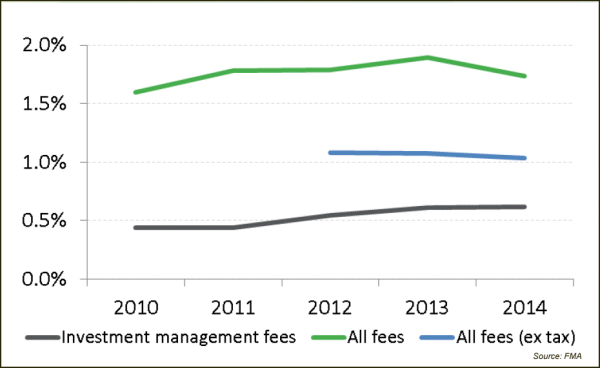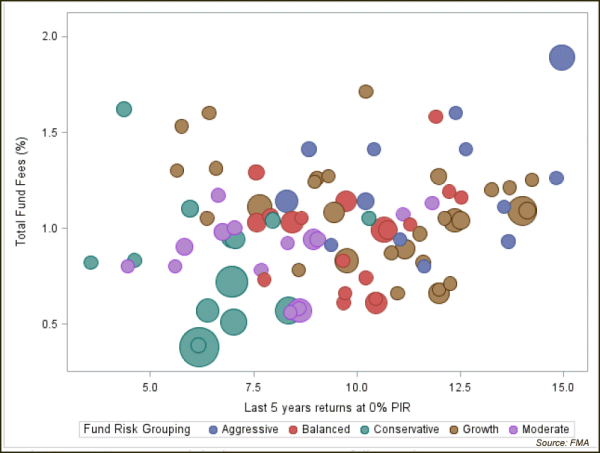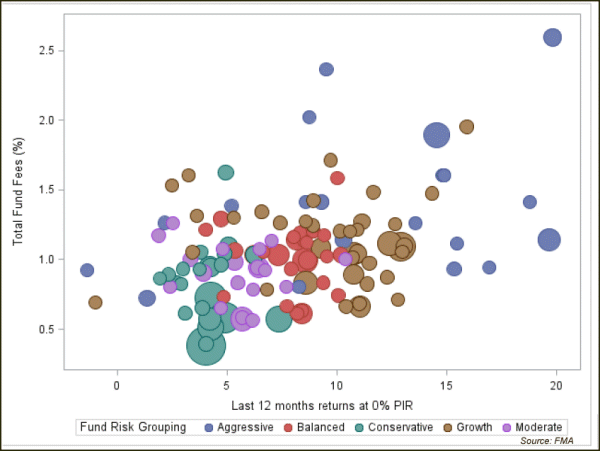Currently there is $21.4 billion invested by 2.3 million members in KiwiSaver and because of its size and importance to financial markets is getting more attention from the regulator.
FMA head of supervision Kirsty Campbell says that 66% of members are in bank run schemes and these schemes are seeing strong growth in funds under management and in membership, especially compared to non-bank schemes.
She can "see why there are concerns about switching practices."
The regulator's analysis of the March quarterly disclosure documents show that investment management fees have been rising and this may be because of performance fees, however overall fees have shown a slight fall.
[Article continues below]

Campbell says the FMA has done some analysis of fees and the following two graphs show there are some outliers. (The circles are coloured to illustrate fund risk profile and each circle's size represents the size of the fund).
"Some are being followed up to see if there is a reasonable explanation (why fees are high)," she says.
GRAPH: Fees and five year returns

GRAPH: Fees and 12 month returns

| « Advisers to do AML due diligence for fund managers | IFA working on pro-bono offering » |
Special Offers
Sign In to add your comment

© Copyright 1997-2025 Tarawera Publishing Ltd. All Rights Reserved